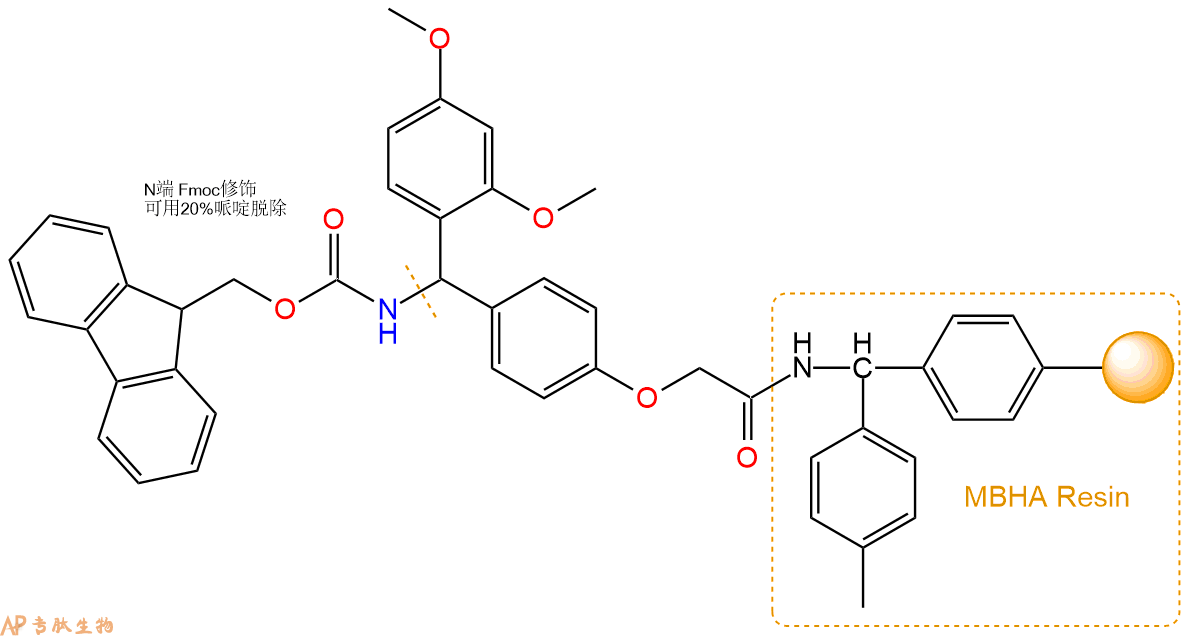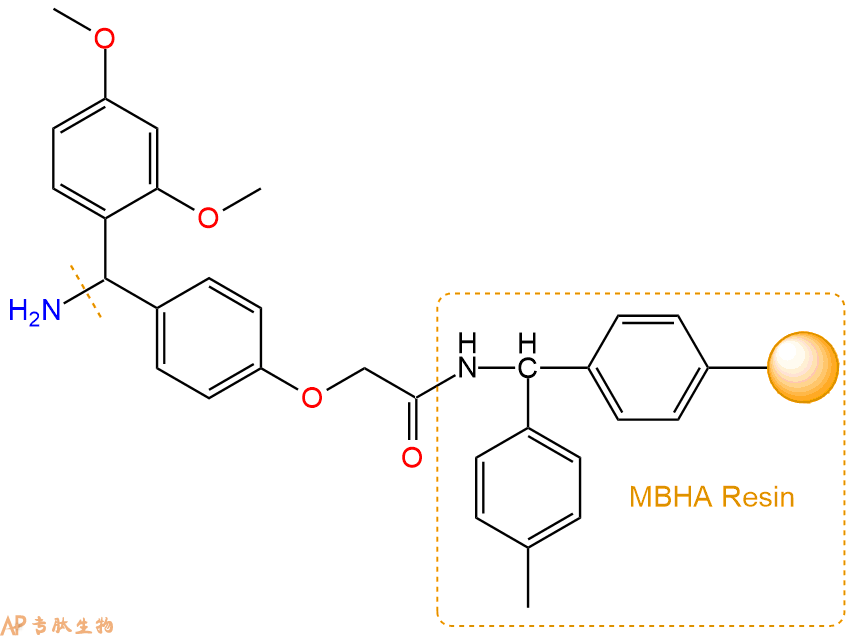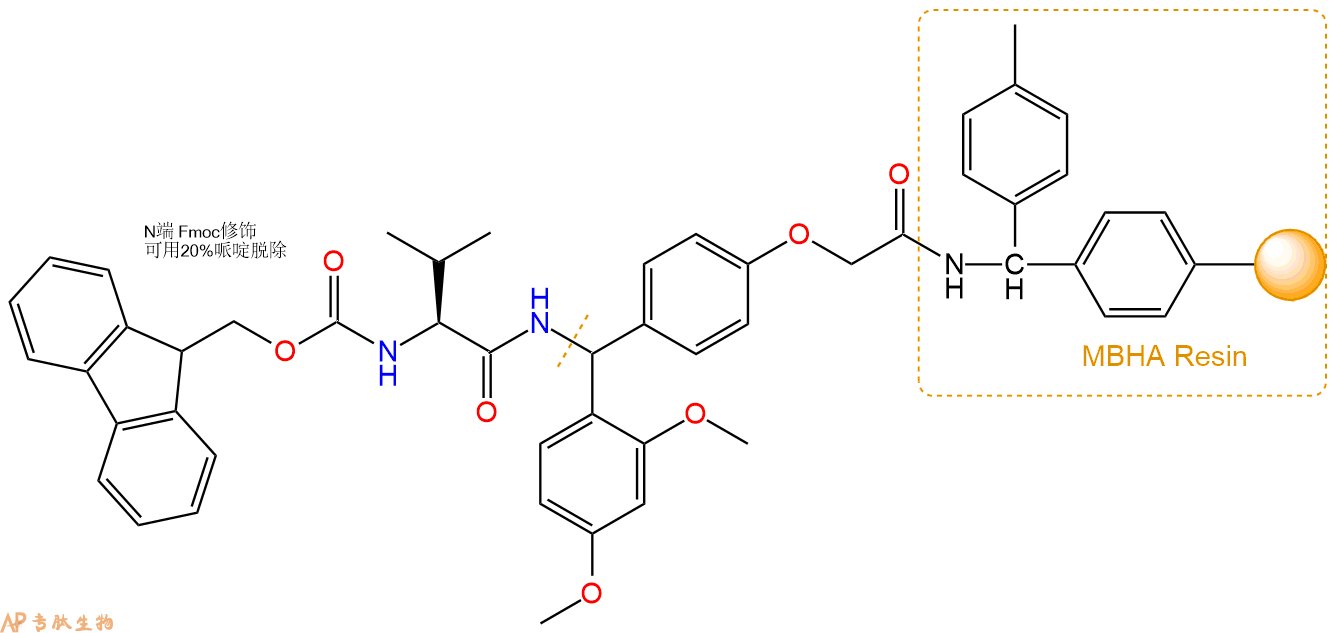400-998-5282
专注多肽 服务科研
400-998-5282
专注多肽 服务科研

27 个氨基酸组成的多肽,可以作用于分泌素 (secretin) 受体,能够增强胰腺的碳酸盐、酶和钾离子的分泌。
编号:150160
CAS号:121028-49-7
单字母:H2N-HSDGTFTSELSRLQDSARLQRLLQGLV-CONH2
Secretin (33-59), rat 是由 27 个氨基酸组成的多肽,可以作用于分泌素 (secretin) 受体,能够增强胰腺的碳酸盐、酶和钾离子的分泌。
Secretin (33-59), rat is a 27-aa peptide, acts on secretin receptor, enhances the secretion of bicarbonate, enzymes, and K+ from the pancreas.
Secretin (rat)是一种神经肽激素,可调节胃,胰腺和肝脏的分泌。
Secretin is a gastrointestinal hormone secreted by S cells in the small intestine, targeting G-protein coupled secretin receptors in numerous cell types. Secretin is synthesised from the preprohormone pro-secretin and is involved in regulating gastric acid and bicarbonate ion secretion in the duodenum and regulating water homeostasis. During glucose intake, secretin stimulates the pancreas to release insulin.Secretin has clinical relevance as a method to detect gastrin-producing tumours. Administration of exogenous secretin to the duodenum for secretin stimulation test to occur. Secretin can also be used to detect pancreatic insufficiencies via s administration during endoscopic retrograde cholangiopancreatography (ERCP). This allows the detection of inflammatory and neoplastic conditions of the pancreas.Secretin plays a different role in the central nervous system, such that in secretin deficient mice, synaptic plasticity and hippocampal synaptic activity are altered. Thus, secretin can be categorised as a neuropeptide.
| DOI | 名称 | |
|---|---|---|
| 10.1016/s0196-9781(99)00193-x | Secretin, glucagon, gastric inhibitory polypeptide, parathyroid hormone, and related peptides in the regulation of the hypothalamus- pituitary-adrenal axis | 下载 |
| 10.1385/MN:26:1:097 | Secretin as a neuropeptide | 下载 |
多肽H2N-His-Ser-Asp-Gly-Thr-Phe-Thr-Ser-Glu-Leu-Ser-Arg-Leu-Gln-Asp-Ser-Ala-Arg-Leu-Gln-Arg-Leu-Leu-Gln-Gly-Leu-Val-NH2的合成步骤:
1、合成MBHA树脂:取若干克的MBHA树脂(如初始取代度为0.5mmol/g)和1倍树脂摩尔量的Fmoc-Linker-OH加入到反应器中,加入DMF,搅拌使氨基酸完全溶解。再加入树脂2倍量的DIEPA,搅拌混合均匀。再加入树脂0.95倍量的HBTU,搅拌混合均匀。反应3-4小时后,用DMF洗涤3次。用2倍树脂体积的10%乙酸酐/DMF 进行封端30分钟。然后再用DMF洗涤3次,甲醇洗涤2次,DCM洗涤2次,再用甲醇洗涤2次。真空干燥12小时以上,得到干燥的树脂{Fmoc-Linker-MHBA Resin},测定取代度。这里测得取代度为 0.3mmol/g。结构如下图:

2、脱Fmoc:取2.82g的上述树脂,用DCM或DMF溶胀20分钟。用DMF洗涤2遍。加3倍树脂体积的20%Pip/DMF溶液,鼓氮气30分钟,然后2倍树脂体积的DMF 洗涤5次。得到 H2N-Linker-MBHA Resin 。(此步骤脱除Fmoc基团,茚三酮检测为蓝色,Pip为哌啶)。结构图如下:

3、缩合:取2.54mmol Fmoc-Val-OH 氨基酸,加入到上述树脂里,加适当DMF溶解氨基酸,再依次加入5.08mmol DIPEA,2.41mmol HBTU。反应30分钟后,取小样洗涤,茚三酮检测为无色。用2倍树脂体积的DMF 洗涤3次树脂。(洗涤树脂,去掉残留溶剂,为下一步反应做准备)。得到Fmoc-Val-Linker-MBHA Resin。氨基酸:DIPEA:HBTU:树脂=3:6:2.85:1(摩尔比)。结构图如下:

4、依次循环步骤二、步骤三,依次得到
H2N-Val-Linker-MBHA Resin
Fmoc-Leu-Val-Linker-MBHA Resin
H2N-Leu-Val-Linker-MBHA Resin
Fmoc-Gly-Leu-Val-Linker-MBHA Resin
H2N-Gly-Leu-Val-Linker-MBHA Resin
Fmoc-Gln(Trt)-Gly-Leu-Val-Linker-MBHA Resin
H2N-Gln(Trt)-Gly-Leu-Val-Linker-MBHA Resin
Fmoc-Leu-Gln(Trt)-Gly-Leu-Val-Linker-MBHA Resin
H2N-Leu-Gln(Trt)-Gly-Leu-Val-Linker-MBHA Resin
Fmoc-Leu-Leu-Gln(Trt)-Gly-Leu-Val-Linker-MBHA Resin
H2N-Leu-Leu-Gln(Trt)-Gly-Leu-Val-Linker-MBHA Resin
Fmoc-Arg(Pbf)-Leu-Leu-Gln(Trt)-Gly-Leu-Val-Linker-MBHA Resin
H2N-Arg(Pbf)-Leu-Leu-Gln(Trt)-Gly-Leu-Val-Linker-MBHA Resin
Fmoc-Gln(Trt)-Arg(Pbf)-Leu-Leu-Gln(Trt)-Gly-Leu-Val-Linker-MBHA Resin
H2N-Gln(Trt)-Arg(Pbf)-Leu-Leu-Gln(Trt)-Gly-Leu-Val-Linker-MBHA Resin
Fmoc-Leu-Gln(Trt)-Arg(Pbf)-Leu-Leu-Gln(Trt)-Gly-Leu-Val-Linker-MBHA Resin
H2N-Leu-Gln(Trt)-Arg(Pbf)-Leu-Leu-Gln(Trt)-Gly-Leu-Val-Linker-MBHA Resin
Fmoc-Arg(Pbf)-Leu-Gln(Trt)-Arg(Pbf)-Leu-Leu-Gln(Trt)-Gly-Leu-Val-Linker-MBHA Resin
H2N-Arg(Pbf)-Leu-Gln(Trt)-Arg(Pbf)-Leu-Leu-Gln(Trt)-Gly-Leu-Val-Linker-MBHA Resin
Fmoc-Ala-Arg(Pbf)-Leu-Gln(Trt)-Arg(Pbf)-Leu-Leu-Gln(Trt)-Gly-Leu-Val-Linker-MBHA Resin
H2N-Ala-Arg(Pbf)-Leu-Gln(Trt)-Arg(Pbf)-Leu-Leu-Gln(Trt)-Gly-Leu-Val-Linker-MBHA Resin
Fmoc-Ser(tBu)-Ala-Arg(Pbf)-Leu-Gln(Trt)-Arg(Pbf)-Leu-Leu-Gln(Trt)-Gly-Leu-Val-Linker-MBHA Resin
H2N-Ser(tBu)-Ala-Arg(Pbf)-Leu-Gln(Trt)-Arg(Pbf)-Leu-Leu-Gln(Trt)-Gly-Leu-Val-Linker-MBHA Resin
Fmoc-Asp(OtBu)-Ser(tBu)-Ala-Arg(Pbf)-Leu-Gln(Trt)-Arg(Pbf)-Leu-Leu-Gln(Trt)-Gly-Leu-Val-Linker-MBHA Resin
H2N-Asp(OtBu)-Ser(tBu)-Ala-Arg(Pbf)-Leu-Gln(Trt)-Arg(Pbf)-Leu-Leu-Gln(Trt)-Gly-Leu-Val-Linker-MBHA Resin
Fmoc-Gln(Trt)-Asp(OtBu)-Ser(tBu)-Ala-Arg(Pbf)-Leu-Gln(Trt)-Arg(Pbf)-Leu-Leu-Gln(Trt)-Gly-Leu-Val-Linker-MBHA Resin
H2N-Gln(Trt)-Asp(OtBu)-Ser(tBu)-Ala-Arg(Pbf)-Leu-Gln(Trt)-Arg(Pbf)-Leu-Leu-Gln(Trt)-Gly-Leu-Val-Linker-MBHA Resin
Fmoc-Leu-Gln(Trt)-Asp(OtBu)-Ser(tBu)-Ala-Arg(Pbf)-Leu-Gln(Trt)-Arg(Pbf)-Leu-Leu-Gln(Trt)-Gly-Leu-Val-Linker-MBHA Resin
H2N-Leu-Gln(Trt)-Asp(OtBu)-Ser(tBu)-Ala-Arg(Pbf)-Leu-Gln(Trt)-Arg(Pbf)-Leu-Leu-Gln(Trt)-Gly-Leu-Val-Linker-MBHA Resin
Fmoc-Arg(Pbf)-Leu-Gln(Trt)-Asp(OtBu)-Ser(tBu)-Ala-Arg(Pbf)-Leu-Gln(Trt)-Arg(Pbf)-Leu-Leu-Gln(Trt)-Gly-Leu-Val-Linker-MBHA Resin
H2N-Arg(Pbf)-Leu-Gln(Trt)-Asp(OtBu)-Ser(tBu)-Ala-Arg(Pbf)-Leu-Gln(Trt)-Arg(Pbf)-Leu-Leu-Gln(Trt)-Gly-Leu-Val-Linker-MBHA Resin
Fmoc-Ser(tBu)-Arg(Pbf)-Leu-Gln(Trt)-Asp(OtBu)-Ser(tBu)-Ala-Arg(Pbf)-Leu-Gln(Trt)-Arg(Pbf)-Leu-Leu-Gln(Trt)-Gly-Leu-Val-Linker-MBHA Resin
H2N-Ser(tBu)-Arg(Pbf)-Leu-Gln(Trt)-Asp(OtBu)-Ser(tBu)-Ala-Arg(Pbf)-Leu-Gln(Trt)-Arg(Pbf)-Leu-Leu-Gln(Trt)-Gly-Leu-Val-Linker-MBHA Resin
Fmoc-Leu-Ser(tBu)-Arg(Pbf)-Leu-Gln(Trt)-Asp(OtBu)-Ser(tBu)-Ala-Arg(Pbf)-Leu-Gln(Trt)-Arg(Pbf)-Leu-Leu-Gln(Trt)-Gly-Leu-Val-Linker-MBHA Resin
H2N-Leu-Ser(tBu)-Arg(Pbf)-Leu-Gln(Trt)-Asp(OtBu)-Ser(tBu)-Ala-Arg(Pbf)-Leu-Gln(Trt)-Arg(Pbf)-Leu-Leu-Gln(Trt)-Gly-Leu-Val-Linker-MBHA Resin
Fmoc-Glu(OtBu)-Leu-Ser(tBu)-Arg(Pbf)-Leu-Gln(Trt)-Asp(OtBu)-Ser(tBu)-Ala-Arg(Pbf)-Leu-Gln(Trt)-Arg(Pbf)-Leu-Leu-Gln(Trt)-Gly-Leu-Val-Linker-MBHA Resin
H2N-Glu(OtBu)-Leu-Ser(tBu)-Arg(Pbf)-Leu-Gln(Trt)-Asp(OtBu)-Ser(tBu)-Ala-Arg(Pbf)-Leu-Gln(Trt)-Arg(Pbf)-Leu-Leu-Gln(Trt)-Gly-Leu-Val-Linker-MBHA Resin
Fmoc-Ser(tBu)-Glu(OtBu)-Leu-Ser(tBu)-Arg(Pbf)-Leu-Gln(Trt)-Asp(OtBu)-Ser(tBu)-Ala-Arg(Pbf)-Leu-Gln(Trt)-Arg(Pbf)-Leu-Leu-Gln(Trt)-Gly-Leu-Val-Linker-MBHA Resin
H2N-Ser(tBu)-Glu(OtBu)-Leu-Ser(tBu)-Arg(Pbf)-Leu-Gln(Trt)-Asp(OtBu)-Ser(tBu)-Ala-Arg(Pbf)-Leu-Gln(Trt)-Arg(Pbf)-Leu-Leu-Gln(Trt)-Gly-Leu-Val-Linker-MBHA Resin
Fmoc-Thr(tBu)-Ser(tBu)-Glu(OtBu)-Leu-Ser(tBu)-Arg(Pbf)-Leu-Gln(Trt)-Asp(OtBu)-Ser(tBu)-Ala-Arg(Pbf)-Leu-Gln(Trt)-Arg(Pbf)-Leu-Leu-Gln(Trt)-Gly-Leu-Val-Linker-MBHA Resin
H2N-Thr(tBu)-Ser(tBu)-Glu(OtBu)-Leu-Ser(tBu)-Arg(Pbf)-Leu-Gln(Trt)-Asp(OtBu)-Ser(tBu)-Ala-Arg(Pbf)-Leu-Gln(Trt)-Arg(Pbf)-Leu-Leu-Gln(Trt)-Gly-Leu-Val-Linker-MBHA Resin
Fmoc-Phe-Thr(tBu)-Ser(tBu)-Glu(OtBu)-Leu-Ser(tBu)-Arg(Pbf)-Leu-Gln(Trt)-Asp(OtBu)-Ser(tBu)-Ala-Arg(Pbf)-Leu-Gln(Trt)-Arg(Pbf)-Leu-Leu-Gln(Trt)-Gly-Leu-Val-Linker-MBHA Resin
H2N-Phe-Thr(tBu)-Ser(tBu)-Glu(OtBu)-Leu-Ser(tBu)-Arg(Pbf)-Leu-Gln(Trt)-Asp(OtBu)-Ser(tBu)-Ala-Arg(Pbf)-Leu-Gln(Trt)-Arg(Pbf)-Leu-Leu-Gln(Trt)-Gly-Leu-Val-Linker-MBHA Resin
Fmoc-Thr(tBu)-Phe-Thr(tBu)-Ser(tBu)-Glu(OtBu)-Leu-Ser(tBu)-Arg(Pbf)-Leu-Gln(Trt)-Asp(OtBu)-Ser(tBu)-Ala-Arg(Pbf)-Leu-Gln(Trt)-Arg(Pbf)-Leu-Leu-Gln(Trt)-Gly-Leu-Val-Linker-MBHA Resin
H2N-Thr(tBu)-Phe-Thr(tBu)-Ser(tBu)-Glu(OtBu)-Leu-Ser(tBu)-Arg(Pbf)-Leu-Gln(Trt)-Asp(OtBu)-Ser(tBu)-Ala-Arg(Pbf)-Leu-Gln(Trt)-Arg(Pbf)-Leu-Leu-Gln(Trt)-Gly-Leu-Val-Linker-MBHA Resin
Fmoc-Gly-Thr(tBu)-Phe-Thr(tBu)-Ser(tBu)-Glu(OtBu)-Leu-Ser(tBu)-Arg(Pbf)-Leu-Gln(Trt)-Asp(OtBu)-Ser(tBu)-Ala-Arg(Pbf)-Leu-Gln(Trt)-Arg(Pbf)-Leu-Leu-Gln(Trt)-Gly-Leu-Val-Linker-MBHA Resin
H2N-Gly-Thr(tBu)-Phe-Thr(tBu)-Ser(tBu)-Glu(OtBu)-Leu-Ser(tBu)-Arg(Pbf)-Leu-Gln(Trt)-Asp(OtBu)-Ser(tBu)-Ala-Arg(Pbf)-Leu-Gln(Trt)-Arg(Pbf)-Leu-Leu-Gln(Trt)-Gly-Leu-Val-Linker-MBHA Resin
Fmoc-Asp(OtBu)-Gly-Thr(tBu)-Phe-Thr(tBu)-Ser(tBu)-Glu(OtBu)-Leu-Ser(tBu)-Arg(Pbf)-Leu-Gln(Trt)-Asp(OtBu)-Ser(tBu)-Ala-Arg(Pbf)-Leu-Gln(Trt)-Arg(Pbf)-Leu-Leu-Gln(Trt)-Gly-Leu-Val-Linker-MBHA Resin
H2N-Asp(OtBu)-Gly-Thr(tBu)-Phe-Thr(tBu)-Ser(tBu)-Glu(OtBu)-Leu-Ser(tBu)-Arg(Pbf)-Leu-Gln(Trt)-Asp(OtBu)-Ser(tBu)-Ala-Arg(Pbf)-Leu-Gln(Trt)-Arg(Pbf)-Leu-Leu-Gln(Trt)-Gly-Leu-Val-Linker-MBHA Resin
Fmoc-Ser(tBu)-Asp(OtBu)-Gly-Thr(tBu)-Phe-Thr(tBu)-Ser(tBu)-Glu(OtBu)-Leu-Ser(tBu)-Arg(Pbf)-Leu-Gln(Trt)-Asp(OtBu)-Ser(tBu)-Ala-Arg(Pbf)-Leu-Gln(Trt)-Arg(Pbf)-Leu-Leu-Gln(Trt)-Gly-Leu-Val-Linker-MBHA Resin
H2N-Ser(tBu)-Asp(OtBu)-Gly-Thr(tBu)-Phe-Thr(tBu)-Ser(tBu)-Glu(OtBu)-Leu-Ser(tBu)-Arg(Pbf)-Leu-Gln(Trt)-Asp(OtBu)-Ser(tBu)-Ala-Arg(Pbf)-Leu-Gln(Trt)-Arg(Pbf)-Leu-Leu-Gln(Trt)-Gly-Leu-Val-Linker-MBHA Resin
Fmoc-His(Trt)-Ser(tBu)-Asp(OtBu)-Gly-Thr(tBu)-Phe-Thr(tBu)-Ser(tBu)-Glu(OtBu)-Leu-Ser(tBu)-Arg(Pbf)-Leu-Gln(Trt)-Asp(OtBu)-Ser(tBu)-Ala-Arg(Pbf)-Leu-Gln(Trt)-Arg(Pbf)-Leu-Leu-Gln(Trt)-Gly-Leu-Val-Linker-MBHA Resin
以上中间结构,均可在专肽生物多肽计算器-多肽结构计算器中,一键画出。
最后再经过步骤二得到 H2N-His(Trt)-Ser(tBu)-Asp(OtBu)-Gly-Thr(tBu)-Phe-Thr(tBu)-Ser(tBu)-Glu(OtBu)-Leu-Ser(tBu)-Arg(Pbf)-Leu-Gln(Trt)-Asp(OtBu)-Ser(tBu)-Ala-Arg(Pbf)-Leu-Gln(Trt)-Arg(Pbf)-Leu-Leu-Gln(Trt)-Gly-Leu-Val-Linker-MBHA Resin,结构如下:

5、切割:6倍树脂体积的切割液(或每1g树脂加8ml左右的切割液),摇床摇晃 2小时,过滤掉树脂,用冰无水乙醚沉淀滤液,并用冰无水乙醚洗涤沉淀物3次,最后将沉淀物放真空干燥釜中,常温干燥24小试,得到粗品H2N-His-Ser-Asp-Gly-Thr-Phe-Thr-Ser-Glu-Leu-Ser-Arg-Leu-Gln-Asp-Ser-Ala-Arg-Leu-Gln-Arg-Leu-Leu-Gln-Gly-Leu-Val-NH2。结构图见产品结构图。
切割液选择:1)TFA:H2O=95%:5%
2)TFA:H2O:TIS=95%:2.5%:2.5%
3)三氟乙酸:茴香硫醚:1,2-乙二硫醇:苯酚:水=87.5%:5%:2.5%:2.5%:2.5%
(前两种适合没有容易氧化的氨基酸,例如Trp、Cys、Met。第三种适合几乎所有的序列。)
6、纯化冻干:使用液相色谱纯化,收集目标峰液体,进行冻干,获得蓬松的粉末状固体多肽。不过这时要取小样复测下纯度 是否目标纯度。
7、最后总结:
杭州专肽生物技术有限公司(ALLPEPTIDE https://www.allpeptide.com)主营定制多肽合成业务,提供各类长肽,短肽,环肽,提供各类修饰肽,如:荧光标记修饰(CY3、CY5、CY5.5、CY7、FAM、FITC、Rhodamine B、TAMRA等),功能基团修饰肽(叠氮、炔基、DBCO、DOTA、NOTA等),同位素标记肽(N15、C13),订书肽(Stapled Peptide),脂肪酸修饰肽(Pal、Myr、Ste),磷酸化修饰肽(P-Ser、P-Thr、P-Tyr),环肽(酰胺键环肽、一对或者多对二硫键环),生物素标记肽,PEG修饰肽,甲基化修饰肽等。
以上所有内容,为专肽生物原创内容,请勿发布到其他网站上。





